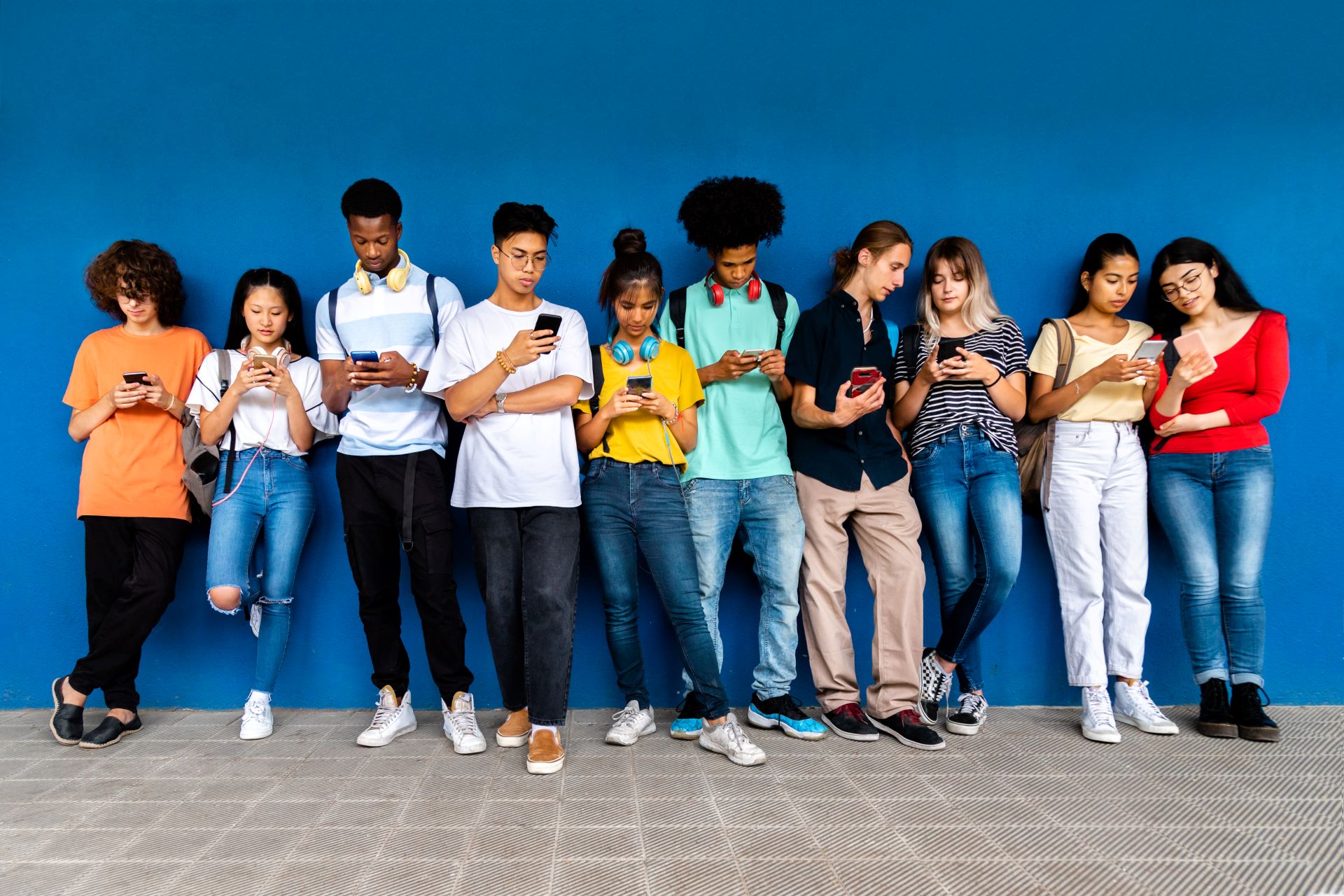The Impact of Video Games and Social Media on ADHD Brains: Understanding Technology Addiction

About three-quarters of American teens have access to a smartphone, a computer, and a gaming console.1 Four in ten teen boys say they spend too much time playing video games, while 36% of all teens say they spend too much time on social media.12 It would be very or somewhat hard to give up social media, according to more than half of U.S. teens.1
From Fortnite to TikTok, video games and social media channels are carefully designed to encourage habitual use. It’s certainly possible to engage in a healthy, recreational way, but technology use can and does become problematic. The factors that drive “technology addiction” are complex. That said, teens with attention deficit hyperactivity disorder (ADHD) who struggle with self-control and self-regulation may be at elevated risk.
The Hook Model is utilized by and social media developers to induce users to return and spend untold hours on their products. Here’s how the model works:
The Hook Model is all about building habits, and gamifying the experience is part of the process. Consider Snapstreaks, a popular feature on Snapchat that tracks the length of time users have consecutively “snapped” each other. Maintaining streaks becomes hugely important for some users, who may feel anxiety and peer pressure to keep them going.3 Teens tell me that maintaining a Snapstreak with a friend often becomes more important than the quality of the interaction.
The promise of a variable reward is potent and addicting, as the popularity of real-world slot machines and video-game loot boxes prove true. A staple in video games, loot boxes contain valuable and sometimes rare items for use in the game — from “skins” (the cosmetic look of an item or character) to equipment. Loot boxes are often unlocked with frequent game play, though some players purchase access with real money. Studies have found connections between loot-box engagement and problematic gaming.4 Bills to regulate loot boxes, especially for minors, have been introduced in the U.S. and other countries.56
All gamers can fall into one of three big profiles.
As with most things in life, what we engage with and how will impact our health and wellbeing. Just as we can have a healthy relationship with food, for example, we can have a healthy relationship with technology. As avenues for socialization, connection, learning, healthy competition, and skill-building, gaming and social media use do have redeeming qualities. (Some gamers have even made successful careers out of professional gaming and content creation.) Billions of gamers and social media users worldwide play and engage recreationally; for them, gaming and social media use don’t cause any problems.
But just as eating behaviors can become unhealthy and disordered, so too can technology use. Like other behavioral addictions, disordered gaming or social media use is characterized by persistent and excess engagement in the activity to the point of significant impairment in personal, family, social, educational, and other areas of functioning. The following are some warning signs of technology addiction:
Disordered gaming and/or social media use is associated with problems like anxiety, depression, and loneliness.789 (Both tend to be physically isolating activities, which could fuel these issues.) Particularly in teens, cognitive distortions accompany problems with controlling behavior around tech use. A teen might repeatedly skirt screen-use limits set by their parents, thinking that it’s “not a big deal.” They might delay working on important school assignments in favor of playing, thinking, “I’ll figure it out later.” It doesn’t help that online content is easily accessed and instantly reinforcing, making it easy to ignore long-term consequences, like getting a bad grade on a test. Disordered gaming and/or social media use, like other addictions, can also strain relationships and finances.
The World Health Organization (WHO) voted to recognize “Gaming Disorder” in its official list of conditions in 2019. Meanwhile, “Internet Gaming Disorder” is a proposed condition under the DSM-5 The prevalence range of gaming disorder is 1% to 4%, though estimates vary.101112 Social media addiction and other forms of digital addiction are not recognized by either body, though research on various forms of disordered or problematic tech and screen use is ongoing.
There are differences between disordered/problematic use, and the more serious at-risk use. With problematic gaming, for example, an individual shows some but not all the signs of a legitimate disorder. They may frequently fall behind on schoolwork, stay up late, and fight with parents because of their gaming. About 5% of players display problematic gaming, while another 5% of players meet the criteria for at-risk or engaged gaming, meaning that they show a few behaviors that, if continued, could become problematic.7
Screen use doesn’t cause ADHD, though researchers have uncovered certain connections between ADHD symptoms, gaming, social media, and other forms of screen use and digital tech, like the following:
If your teen is showing signs of disordered tech/screen use, talk to their doctor or to a mental health professional. Help for technology addiction is available and ranges from psychotherapy and inpatient treatment clinics (like reSTART, a center in Seattle, Washington, dedicated to gaming/screen use disorder) to recovery programs, support groups, and even medication. Seek professional counseling from providers who specialize in gaming and/or problematic screen use. (That is our focus at Escapingthe.com, a Dallas, Texas-based professional counseling service I founded.)
1. Be a role model. Even if you don’t use TikTok or play Roblox, you probably interact with screens in some way. Question your own screen use and give your child a lens into your intentions and reasoning when engaging in screen time.
2. Approach your teen’s screen use without judgment. Don’t assume that your teen’s gaming or social media use is inherently bad or harmful. That will only push them away. Instead, be curious and ask open-ended questions like, “What do you like about this video game/this app/this content creator?”
3. Talk through the meaning of healthy screen use with your teen. Empower them to think about how to use their preferred screen activity to enhance and add more value to their life. Ask, “What do you need to be healthy and safe while gaming, using social media, and being online?”
4. Set clear boundaries and consequences. Understanding what your teen does while gaming or browsing through social media will help you set appropriate, informed limits that they’ll be inclined to follow. You may allow your child to play a video game, for example, but not to curse at other players or give out personal information as they play.
5. Engage in screen time with intention. Encourage your teen to do the following:
6. Think “transferable motivations” when looking for off-screen activities. If your teen is reluctant to take up other hobbies, bring the appeal of screen activities to real life. If your child likes Minecraft because they get to build and create, sign them up for a robotics club. If your child likes the challenge of a fast-paced and competitive video game like Valorant, an activity like rock climbing could suit them. The more you learn about your child’s screen use motivations, the more likely you’ll find great matches in the real world.
7. Reward time spent away from devices or apps. Flip variable reward on its head! Apps and programs like PocketPoints and Forest gamify being away from distracting websites, apps, and even your phone altogether.
8. Focus on maintaining a good relationship with your child. Too many of parents’ interactions with teens focus on setting limits — on screen time, video game time, time spent with friends, and other privileges. It’s unrealistic to think you’ll be able to control every single thing your child does; you’ll drive a wedge between you and your teen by trying. For the sake of your relationship with your child, engage in some intentional ignoring here and there, and focus instead on positive interactions. Show your child that you’re on their side.
9. If your teen is exhibiting problematic gaming or social media use, stop the specific activity for 60 to 90 days and help your child navigate the following steps:
The content for this article was derived, in part, from the ADDitude ADHD Experts webinar titled, “Addictive Technology and Its Impact on Teen Brains” with Jeremy Edge, LPC, IGDC, which was broadcast on April 19, 2023.
CELEBRATING 25 YEARS OF ADDITUDE Since 1998, ADDitude has worked to provide ADHD education and guidance through webinars, newsletters, community engagement, and its groundbreaking magazine. To support ADDitude’s mission, please consider subscribing. Your readership and support help make our content and outreach possible. Thank you.
1 Vogels, E.,Gelles-Watnick, R., Massarat, N. (2022). Teens, social media and technology 2022. Pew Research Center. https://www.pewresearch.org/internet/2022/08/10/teens-social-media-and-technology-2022/
2 Jiang, J. (2018). How teens and parents navigate screen time and device distractions. Pew Research Center. https://www.pewresearch.org/internet/2018/08/22/how-teens-and-parents-navigate-screen-time-and-device-distractions/
3 Throuvala, M. A., Griffiths, M. D., Rennoldson, M., & Kuss, D. J. (2019). Motivational processes and dysfunctional mechanisms of social media use among adolescents: A qualitative focus group study. Computers in Human Behavior, 93, 164–175. https://doi.org/10.1016/j.chb.2018.12.012
4 Montiel, I., Basterra-González, A., Machimbarrena, J. M., Ortega-Barón, J., & González-Cabrera, J. (2022). Loot box engagement: A scoping review of primary studies on prevalence and association with problematic gaming and gambling. PloS one, 17(1), e0263177. https://doi.org/10.1371/journal.pone.0263177
5 Kelly, M. (2019) Bill to ban the sale of loot boxes to children presses forward with bipartisan support. The Verge. https://www.theverge.com/2019/5/23/18636535/loot-boxes-josh-hawley-markey-blumenthal-privacy-video-games
6 Lee, J. (2022) U.K. won’t ban video game loot boxes following 2-year inquiry. The Washington Post. https://www.washingtonpost.com/video-games/2022/07/19/video-game-look-boxes-uk-report/
7 André, F., Broman, N., Håkansson, A., & Claesdotter-Knutsson, E. (2020). Gaming addiction, problematic gaming and engaged gaming – Prevalence and associated characteristics. Addictive behaviors reports, 12, 100324. https://doi.org/10.1016/j.abrep.2020.100324
8 Männikkö, N., Ruotsalainen, H., Miettunen, J., et al. (2020) Problematic gaming behaviour and health-related outcomes: A systematic review and meta-analysis. Journal of Health Psychology, 25(1):67-81. doi:10.1177/1359105317740414
9 Shannon, H., Bush, K., Villeneuve, P. J., Hellemans, K. G., & Guimond, S. (2022). Problematic Social Media Use in Adolescents and Young Adults: Systematic Review and Meta-analysis. JMIR mental health, 9(4), e33450. https://doi.org/10.2196/33450
10 Przybylski, A. K., Weinstein, N., & Murayama, K. (2017). Internet Gaming Disorder: Investigating the Clinical Relevance of a New Phenomenon. The American journal of psychiatry, 174(3), 230–236. https://doi.org/10.1176/appi.ajp.2016.16020224
11 Stevens, M. W., Dorstyn, D., Delfabbro, P. H., & King, D. L. (2021). Global prevalence of gaming disorder: A systematic review and meta-analysis. The Australian and New Zealand journal of psychiatry, 55(6), 553–568. https://doi.org/10.1177/0004867420962851
12 Fam J. Y. (2018). Prevalence of internet gaming disorder in adolescents: A meta-analysis across three decades. Scandinavian journal of psychology, 59(5), 524–531. https://doi.org/10.1111/sjop.12459
13 Mathews, C. L., Morrell, H. E. R., & Molle, J. E. (2019). Video game addiction, ADHD symptomatology, and video game reinforcement. The American journal of drug and alcohol abuse, 45(1), 67–76. https://doi.org/10.1080/00952990.2018.1472269
14 Marmet, S., Studer, J., Grazioli, V. S., & Gmel, G. (2018). Bidirectional Associations Between Self-Reported Gaming Disorder and Adult Attention Deficit Hyperactivity Disorder: Evidence From a Sample of Young Swiss Men. Frontiers in psychiatry, 9, 649. https://doi.org/10.3389/fpsyt.2018.00649
15 Ra, C. K., Cho, J., Stone, M. D., De La Cerda, J., Goldenson, N. I., Moroney, E., Tung, I., Lee, S. S., & Leventhal, A. M. (2018). Association of Digital Media Use With Subsequent Symptoms of Attention-Deficit/Hyperactivity Disorder Among Adolescents. JAMA, 320(3), 255–263. https://doi.org/10.1001/jama.2018.8931
16 Werling, A. M., Kuzhippallil, S., Emery, S., Walitza, S., & Drechsler, R. (2022). Problematic use of digital media in children and adolescents with a diagnosis of attention-deficit/hyperactivity disorder compared to controls. A meta-analysis. Journal of behavioral addictions, 11(2), 305–325. Advance online publication. https://doi.org/10.1556/2006.2022.00007
17 Karim, F., Oyewande, A. A., Abdalla, L. F., Chaudhry Ehsanullah, R., & Khan, S. (2020). Social Media Use and Its Connection to Mental Health: A Systematic Review. Cureus, 12(6), e8627. https://doi.org/10.7759/cureus.8627




